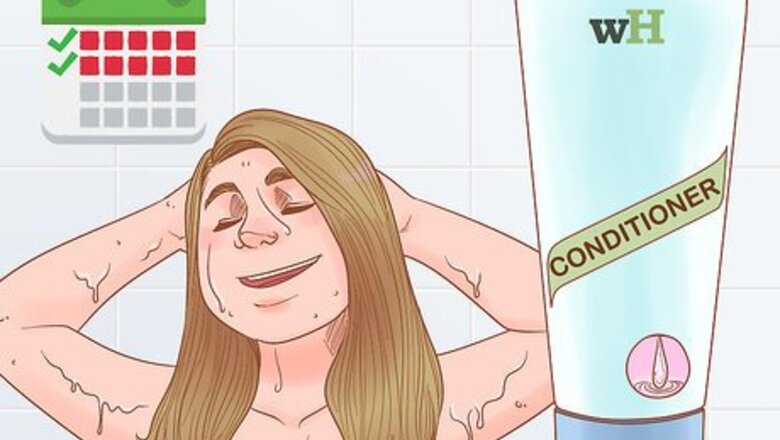
views
Preparing Dark Hair

Condition your hair every few days for 2 weeks. Conditioning your hair before stripping it will help it to be strong and undamaged by the bleach. Choose a sulfate-free, natural conditioner to keep your hair healthy and strong. As another option, hair masks will also condition your hair well, as they both moisturise and keep your hair feeling lightweight.

Avoid washing your hair for 3 days prior to bleaching. Your scalp can get irritated by the bleach if your hair has been recently washed. This is to make the bleaching process as comfortable and safe as possible. Bleaching your hair can also make your scalp itchy, but greasy hair will help to reduce the itch.

Use a hair oil the night before. Almond, argan, or rosehip oils are the best types to use before lightening your hair. Hair oil will nourish your hair with B vitamins, helping it to stay strong throughout the bleaching process. Keeping your hair as healthy as possible before, during, and after bleaching will make it more likely for the bleach to work successfully, and for your hair to not turn orange.
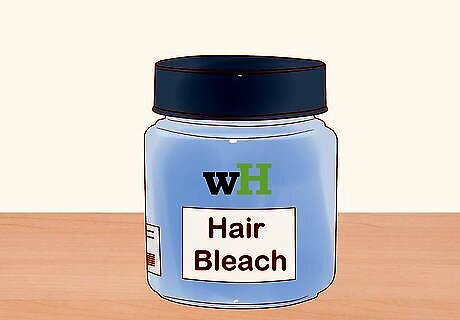
Pick out the best bleach powder for your hair. Bleach kits are usually sold with both the bleach powder and the developer. Bleach powders come in white, purple, or blue, and the end result usually doesn’t differ much between the three. Reading the instructions on the box of your bleach kit will let you know what hair color and type that kit works best for.
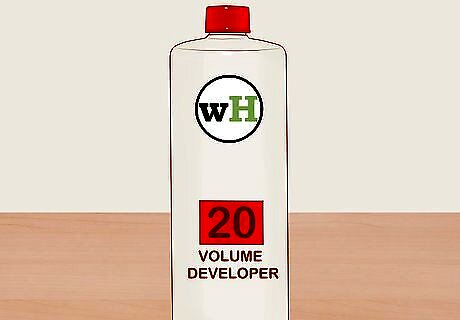
Choose 10 or 20 volume developer for your hair. For darker hair, 30 volume developer works faster than 10 and 20 volume, but it may lighten your hair too much or leave it damaged. Use a 10 or 20 volume developer if you are going to bleach your hair yourself at home. Bleach developer comes in 10, 20, 30, or 40 volume units. 10 is the weakest in strength, while 40 is the strongest. 40 volume is used for highlights only by experienced hair stylists, and should never be in contact with your scalp.
Testing and Sectioning Your Hair
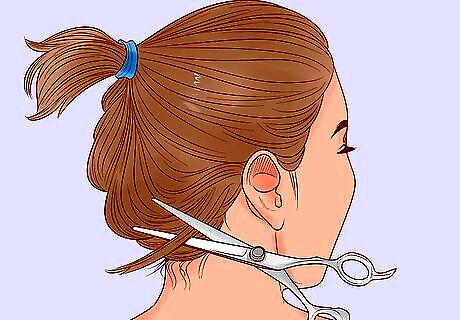
Do a strand test on a section of your hair that is not too visible. Choose strands that are close to the back of your head to perform your strand test, as these are less noticeable. A strand test will give you an idea as to how your hair will react when you bleach it, and how long it will take. Bleach ultimately damages hair, and it is better to see this on a few strands rather than all of your hair.
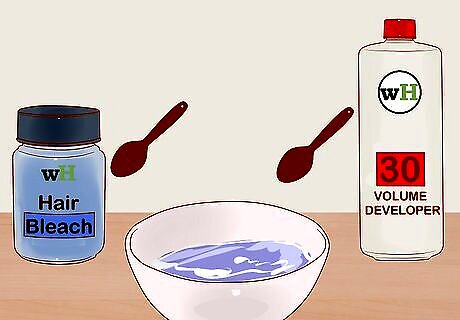
Mix together the bleach powder and liquid developer. Follow the instructions that came with your bleach powder and developer. Use a plastic spoon to mix these together. Make sure to use a non-metallic bowl. You will only need a tiny amount of bleach mixture for a strand test.

Dip the hair strands into the mixture to test them. Make sure that the strands are fully saturated by the bleach mixture. Wipe off a small amount of bleach every five minutes using an old cloth to watch your hair changing color. Apply more bleach if the color isn’t light enough, and continue removing the bleach and applying more until you reach the desired color.
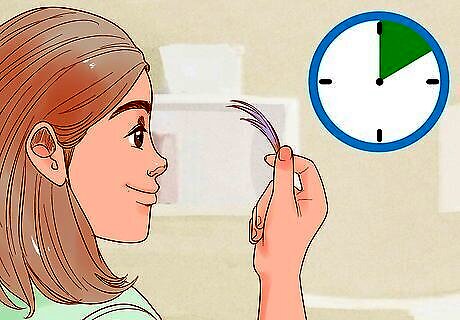
Monitor how long it takes for your hair to change color. Every 5 minutes check on how the strand test is progressing. Keep note of the amount of time that it takes for your hair to change color. If the strands do turn orange during the strand test, then you will know how long you can safely leave the bleach in your hair before it will turn orange.
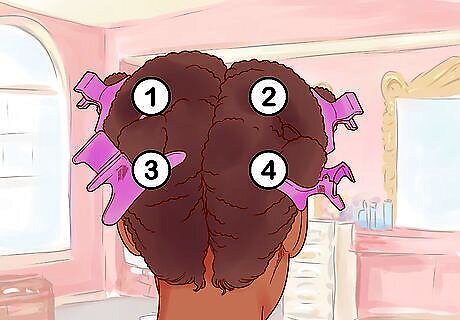
Part your hair into 4 large sections. Create a straight parting from the middle of your forehead down to the start of your neck. Group the hair on the left side together with a plastic clip. Part the hair on the right side horizontally into 2 sections, using the tip of your ear as the parting line. Clip each section in place, and then repeat with the hair on the left side. These sections don’t have to be particularly neat or perfect, as they just serve to hold the hair together and out of the way.
Mixing and Applying the Bleach

Put on disposable gloves and drape an old towel over your shoulders. Make sure that you put the gloves on before you begin mixing any bleach. Bleach can be very damaging to skin and fabrics, so the towel will protect you and your clothes from any bleach that drips from your hair. Many bleach kits will come with the gloves for you to use, but your own plastic or latex gloves are also fine. A hairdressing cape will also work well instead of an old towel if you have access to one.

Mix together the bleach powder and the developer with the tint brush. The ratio of the bleach powder to the developer will be specified on the bleach kit box. Make sure that you use a non-metallic bowl. Place an old towel beneath the bowl to avoid the bleach damaging the surface.
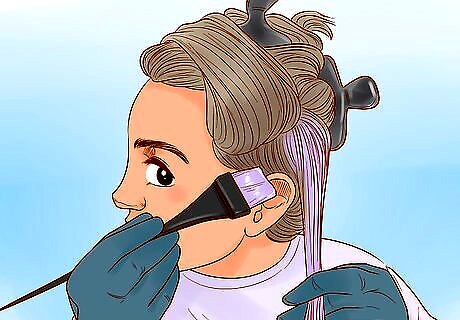
Take a thin section of hair from one of the back quarters. Remove this section from the plastic clip, and keep the rest of your hair clipped back. This section should be about 1 inch (2.5 cm) thick if you have thin hair, or thinner if you have thick hair. Bleaching your hair in small sections will make sure that the bleach is applied thoroughly and evenly throughout.
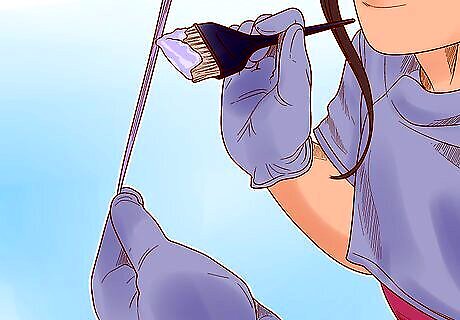
Apply the bleach to this section using the tint brush. Make sure that the bleach covers the full length of your hair, but leave the roots uncovered since the bleach may irritate your scalp. Brush the bleach through in the same direction that your hair grows, starting at the top and ending at the tip. Work as quickly and carefully as possible, so that the first section doesn’t lighten too much before you have put the bleach into the last section.
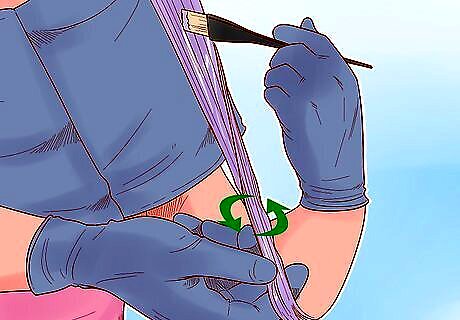
Flip the first section over to show the side that hasn’t been bleached. Apply bleach to this side too, brushing it through in exactly the same way. This will ensure that you don’t accidentally miss a spot. You can group this section together, and clip it back with a plastic clip again to keep it out of the way while you bleach the rest of your hair.

Continue applying bleach to thin sections until each quarter is complete. Repeat the bleaching process through the rest of the first quarter, the other back quarter, and the two front quarters. Remember to leave the roots unbleached for now. By the time you have finished the final front quarter, the first back quarter will be starting to lighten.

Apply bleach to your roots if you want them bleached too. After you have bleached all of the sections of your hair, you can also do the same to the 1 cm (0.4 in) of root hair. Bleach can make your scalp feel itchy or slightly irritated, so start out with a small, unnoticeable part of your roots first to see how it feels. You can leave your roots unbleached if the feeling is too unpleasant.
Processing and Rinsing Your Hair
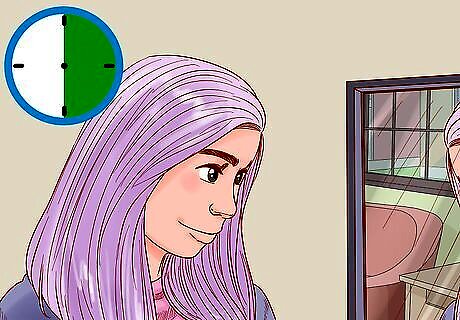
Monitor your hair until it has turned pale blonde. Check your hair every couple of minutes using a mirror to watch the lightening process. Your hair will experience several color changes, going from orange to yellow to pale blonde when you have dark brown hair. Bleach normally takes at least 30 minutes to work, but it will likely take more than 1 session to go from black to blonde. Bleaching black hair to pale blonde will take a lot longer than other hair colors. The amount of time that it takes for your hair to reach pale blonde will depend on your original hair color, and the type of bleach that you are using. The instructions for the bleach kit will give you an accurate length of time that the process will take.

Rinse the bleach out of your hair. Once your hair has reached pale blonde, thoroughly rinse the bleach out straight away. Cold or lukewarm water works best.

Shampoo and condition your hair. Make sure that the water is still cold or lukewarm, and wash your hair with shampoo and then conditioner. Natural or baby shampoos and conditioners are ideal because they are very gentle on your hair, which is necessary after bleaching. Shampoo and conditioner which is natural and specifically designed to hydrate and moisturise your hair are also good choices. Cold or lukewarm water is best because it closes the pores and leaves your hair shiny when it’s dry.
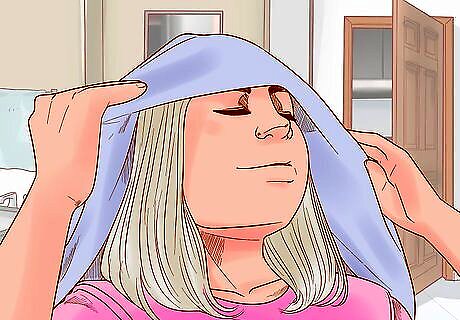
Dry your hair by wrapping it in a towel. Bleach weakens your hair, so this will help to keep it protected while it’s drying. Never rub your hair with the towel, as this could weaken it further. Don’t comb your bleached hair until it is fully dry.
Maintaining Your Color
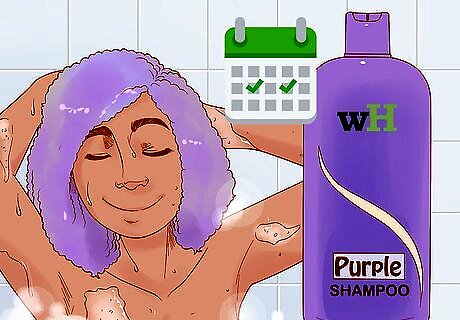
Use a purple or blue shampoo twice a week to avoid brassy tones. A shampoo that is violet toned will work to neutralize warm tones in your hair, such as yellows. A blue shampoo will neutralize orange tones. For hair that has been bleached blonde, use a specifically purple shampoo, and for hair that has been bleached to a lighter brown, use a blue-tinted purple shampoo. Purple shampoos work by balancing out yellow tones, since purple and yellow are opposite on the color wheel. Blue shampoos balance orange tones because blue and orange are opposite on the color wheel.

Wash your hair with color-protective products. Only using purple shampoo could give your hair a purple tinge, so alternating purple shampoo with color-protective products works well. These are designed to keep colored hair healthy, hydrated, and strong, but without the violet pigment. Color-protective products come in the form of shampoo, conditioner, and hair masks.
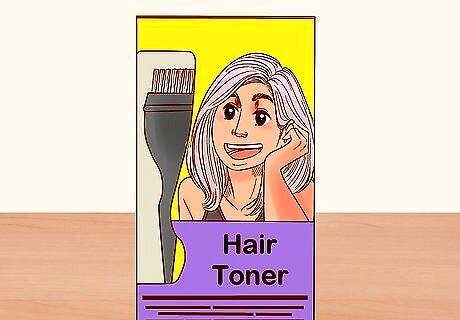
Use a hair toner for a temporary fix to brassy tones. Hair toner can help neutralize orange tones. It's a demi-permanent hair dye that needs to be applied every 6 - 8 weeks to keep the brassy tones away. Use sulfate free shampoo and conditioner to prevent removing the toner from your hair. You can use purple shampoo in combination with hair toner, to help it stay in your hair for longer. Hair toner is normally done at a hair salon, but there are also home options available which can be purchased from hair product stores.

Add lowlights if you are bleached blonde. Lowlights work by darkening the hair which is already brassy, creating darker shades within your blonde hair. This reverses the orange and brassy tones through adding more color. Lowlights are best done at a hair salon.
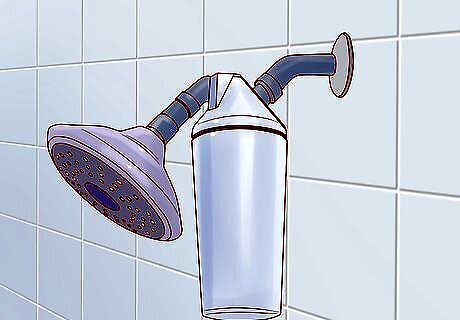
Install a shower water filter for a natural preventative to brassy tones. The mineral components of hard water can cause bleached hair to become brassy. A water filter reduces the number of mineral deposits within the water source, which will help to stop your hair from turning orange. Iron is the main element which adds orange or brassy tones.










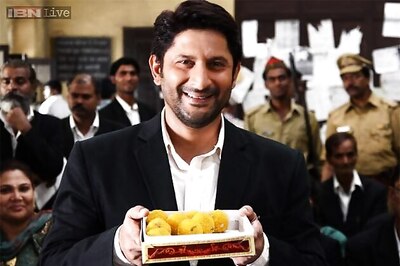









Comments
0 comment